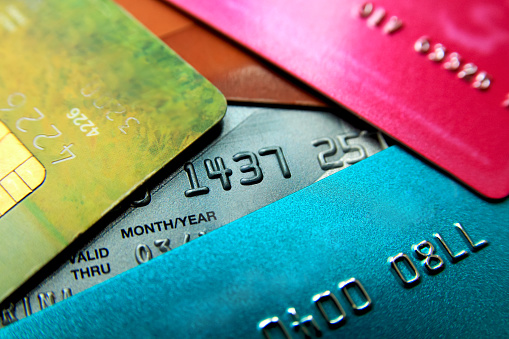Q&A with Rob Cameron, President of Chase Paymentech at JPMorgan Chase & Co.
Canada is rapidly becoming a cashless society. What we want to do is make sure that we have the right terminals, the right support, and integration to the right restaurant management systems that are used by restaurants…50% OF OUR TRANSACTIONS THIS YEAR ARE TAP! ~ Rob Cameron
Where is payment technology headed for foodservice professionals in Canada?
Restaurants need convenient ways to accept payments. More and more it’s by credit and debit cards. That means we need to have the right terminals, the right support, and integration to the right restaurant management systems that are used by restaurants.
Please tell us a little bit about CHASE.
Chase Merchant Services is the global payment acceptance and merchant acquiring business of JPMorgan Chase & Co. We are part of one of the world’s leading financial intuitions. Here in Canada, we have more than 400 team members who work to serve the payment needs of businesses.
Can you give us a real-world example of work you’re doing today?
We serve about 1 in 5 restaurants in the country and we know our customers want their payments systems to talk to their restaurant management systems and we are working to simplify and streamline departments. I have spent a lot of time just looking at what we can do from a field service standpoint to improve the service we give. For example, we are now offering free installations on short-range wireless. This drives a good first experience with Chase. It helps customers get up and running fast. We are also investing time in looking ahead at industry needs, for example, integrating with order-ahead apps and other ways to help restaurants meet customers where they are.
There are many time constraints facing restaurateurS. Is this an integral consideration?
Absolutely. Our focus is on simplifying payments so business owners can focus on serving their customers and growing. Owners want their service to work and to work every time. At the end of the day, that’s how restaurateurs collect their revenue. We feel that they have entrusted us with that and we’re going to do the best job we can.

How do you address the very different challenges faced by different types of restaurateur—from operators that are nationwide chains to the independent operators?
Because we service chains, we’ve got this field support network and we know how to be responsive. We then leverage that and we offer the same high-quality, fast response times to our small/medium businesses, which we think is a differentiator in the market. If they have a problem—for example, things go wrong and you spill on or drop the hardware—we need to get people back up and running and we have a team that understands and has the experience to do that.
What do you see coming in foodservice, what should operators be looking out for?
One important trend is the move towards mobile technology. It allows staff to be able to walk up to a table with an iPad and take orders for drinks and food. In fine dining, when you get that first drink in front of the customer faster, it drives a better customer experience. When it’s time to cash out, guests can easily split the bill and select how to pay. There’s an opportunity for this technology to not just be a better version of what was done, but it can actually change the way restaurateurs operate their businesses.
The real business opportunity is that this allows restaurants to turn tables faster. Waiting for the bill is one of the big dissatisfiers at the end of the night and it drives down tips. So, if you can speed the process up, and turn the table, the customer wins and the restaurant has a better outcome. Order-ahead and location-based services is another big piece. Typically, kitchens aren’t the hold up in a speedier customer experience. It’s actually the queue to place an order and pay, so restaurateurs can get more turn out of the kitchen. We spend a lot of time wondering about and researching the business problems these restaurants are facing; whether it is fine dining where it’s about turning tables vs QSR where it’s about moving that line.
What about apps?
If you are going to use a mobile app, you want to make sure you’re not managing the credit cards yourself to protect the integrity and security of the transaction and your customers. Restaurateurs don’t necessarily understand or want to manage security and that’s why we are a trusted partner—we manage more than a trillion dollars in merchant processing volume globally.
How are you planning to grow the Canadian portion of the business?
Partnerships with organizations like Restaurants Canada help us align our brand with their brand, then we put together special pricing and service packages for end customers. We think a lot about this market as it moves towards more transparency and simplicity.
We have been very successful with businesses crossing the border and doing business in both the US and Canada. Cyber-security is a critical focus, particularly with nuanced businesses. Our customers integrate with Chase once and can do business easily in both countries.
What is the foodservice strategy for Chase?
We want to be an integration point of choice for all of the applications that a restaurant might want to use: from restaurant management to order ahead. We’re very focused on making that seamless and frictionless.
What are red flags Canadian operators should be cautious of?
- Payment technology should be simple to understand—watch out for companies offering things that require a lot of clickthroughs.
- Watch out for fees that are not transparent or consolidated. As an owner, you have the right to know your costs and details.
- Canada is a very chip and pin-focused market, and this absolves liability from restaurant owners, but there are still a few tips to know to avoid fraud.
 Do you have a few final tidbits as we look to the future?
Do you have a few final tidbits as we look to the future?
- Random but fascinating fact—50% of our transactions this year are “tap!”
- Card technology will be replaced by the mobile. Using a card tap will be replaced with phone verification with pin or thumbprint, etc. This will be much more the norm.
- Our mobile devices will employ location services to enable checking out and paying using your phone. Enabling things like tap is a great thing for restaurants.
At Chase, our job is to allow acceptance of however people want to pay. Canadian consumers love loyalty points and credit cards. Funding those programs does have a cost to it, but the benefits are far-reaching and widely embraced by Canadians.
What is your key message to Canadian restaurateurs?
We understand how valuable your time and service is. We are very client-focused and we want to deliver the best possible service in this market.
Red flags
3 things Canadian operators should be cautious of:
- Be wary of odd consumer behaviour. For example, a customer who wants to run a credit card and get cash back from the owner can be a red flag for fraud.
- Keep watch over your equipment. You wouldn’t let someone play with your cash register so don’t let someone take your terminals away. Train your servers.
- Owners should keep themselves out of scope. Don’t keep numbers stored, let us do that. We can provide stored number service.




 Do you have a few final tidbits as we look to the future?
Do you have a few final tidbits as we look to the future?


